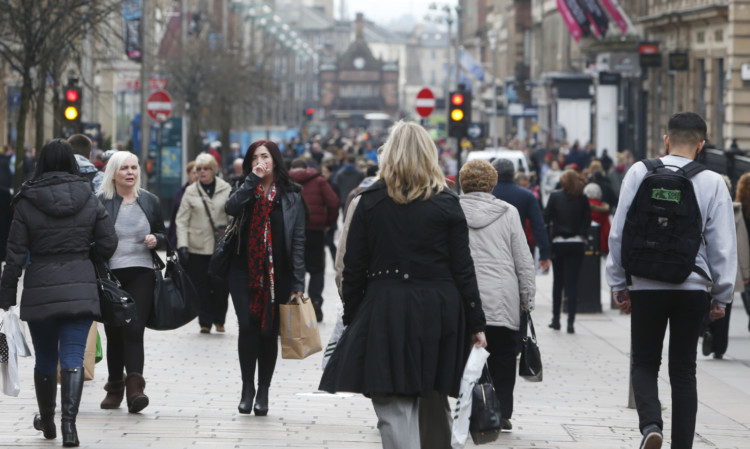Scotland’s retailers have stemmed the tide of falling springtime sales with a new study from Scottish Chambers of Commerce revealing the high street’s best second-quarter trading performance for seven years.
A balance of just under 8% of stores asked by the body’s quarterly Business Survey said takings had fallen during the three months to June when compared with the early part of the year.
But the return compares very favourably with the preceding run of five years during which the proportion of shopkeepers with falling spring revenues outstripped those reporting a level or better result by a margin of at least 35%. In 2010, the measure reached 46%.
The Chambers, which compiles the document alongside Strathclyde University’s Fraser of Allander Institute, identified the improvement in fortunes as one of the study’s key findings.
And it will bring further cheer to a Scottish economy already widely considered to be on the up, suggesting consumers are feeling more confident about spending despite wage rises still languishing behind inflation.
Other findings include even greater optimism in the future of the construction and manufacturing sectors, confidence in the hotel and tourism market and boosted profit expectations for seven-out-of-ten firms in the financial and business services industry.
Scottish Chamber chief executive Liz Cameron said the result showed the organisation’s members were focussed on “doing business and achieving results”.
“A majority of sectors are experiencing continued growth with key indicators maintained from the last quarter, showing that business is on the right track,” she said.
“Construction and manufacturing reported better than expected results, exceeding the expectations from last quarter. Confidence in manufacturing and construction is near record high, signalling a move towards solid growth prospects, indicated by increased orders.
“The construction industry hired more people, enabled by better than forecast orders which are expected to continue into the next quarter. The manufacturing industry reported an increase in export orders and investment with investment at its highest level since 2007.”
She also highlighted how growth and confidence had encouraged business to employ more staff on a full-time, rather than temporary, basis but repeated her warning over a lack of training and skills, which had made it difficult for firms to source and employ workers to support their growth.
“Our continued failure to address these issues will block the ability of business to continue on this path,” Ms Cameron warned.
“The positive results from business should act as motivation for swift action. Colleges, universities, government, with business at the core and in the driving seat, need to develop and implement a realistic plan to plug these gaps urgently.”
Manufacturing firms reported an increase in exporting for the sixth consecutive quarter, the report added, while investment in the sector was at its highest level since the end of 2007. Confidence levels in manufacturing and construction were higher than during any other second quarter period for a decade.
The Chambers said employment prospects were also strong, with 80% of firms committed to maintaining or increasing workforce numbers and “rapid” growth expected in construction.
